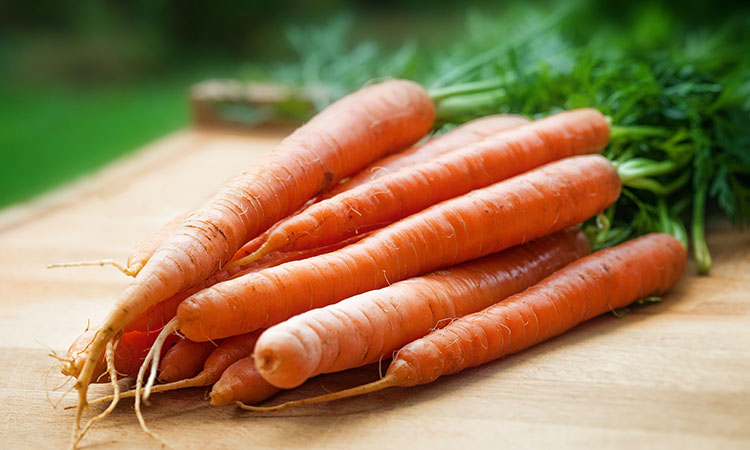Carrots are now orange, but there were no orange carrots before the 17th century. At that time, there were purple carrots. Also, there were white carrots and yellow carrots.
Carrots were long ago found in Central Asia and then in Iran-Afghanistan, then in Persia. Later, carrots gradually spread throughout Europe. In that medieval era. Carrots first came to Spain. After that, it will have to expand to other parts of Europe.
The Dutch practiced the magic of turning carrots from purple to Orange. The Dutch are the same. You have seen the color of such a dress on the Dutch football team’s cricket team—carrot-like Orange.
That’s because Orange is a historically significant color for the Netherlands. That story goes as far as the Dutch independence struggle.
During the early Middle Ages, the “Holy Roman Empire” was formed, uniting Central and Western Europe. This “Holy Roman Empire,” which had undergone various changes for thousands of years, was first cited in 1806 after the Great War of Napoleon Bonaparte and his French army.
Two centuries before the complete overthrow of the Holy Roman Empire, the struggle for independence of the Netherlands took place, causing the carrot to turn Orange. During the reign of King Philip II, son of King Charles V of Spain, who ruled the Holy Roman Empire and was the most powerful man in the world. At that time, Spain was a mighty empire. This period is spa Spanish. Also known as the Golden Age of History. The territories of the Roman Empire, including Italy, Sicily, present-day Netherlands, then the Northern Territories, Luxembourg, and Portugal, and parts of Palestine, and most of the Americas, and the Second Territories. The country now known as the “Philippines” was formerly part of King Philip’s Spanish Empire. The name Philippines is derived from the name of King Philip.
No matter how powerful a ruler is, there are weaknesses. So this King Philip also made a mistake on economic issues. He ruled with a debt-dependent economy. So sometimes, there were times when the empire became economically helpless because of this financial system. This is what King Philip called the weakness that made the Dutch independence struggle so successful. King Philip’s rule was similar to that of his father, King Charles the Great, who exerted tremendous religious pressure on the people. This narrow and weak regime was the main reason for the Dutch struggle.
In the 16th century, a revolt broke out against the Spanish Empire and its ruler, King Philip II. The uprising took place in the seventeen provinces of what is now the Netherlands, Belgium, and Luxembourg. The Dutch-led the rebellion. That is the Dutch. That is why he calls this struggle the “Dutch struggle.”
Somehow this struggle, which began in 1568 with very peaceful protests and criticism, turned into a great war. One or two wars develop into a series of great battles. This wave of warfare lasted for eighty years, giving occasional victories to the empire’s armies and rebels. Therefore, this is known as the “Eighty Years’ War” in world history. Somehow the Dutch rebels eventually overcome this. Conquers and establishes the Netherlands. During the Eighty Years’ War or the latter part of the Dutch independence struggle, a rebel army was led by William Alexander.

He was also known by various names, such as “Silent William” and “William of Orange.”
So, after the Netherlands gained independence from the Spanish Empire and established its own independent Netherlands, it was ruled by the said rebel leader William Alexander. The name “Orange” was added to William Alexander as a gift from his wife’s lineage after his marriage. After marrying a young woman from the “Orange dynasty” who ruled the Orange region in southern France, William was given the family name Orange and the heir to the Orange dynasty. So this “William of Orange” created the Netherlands and became the first “William” to rule there.
The Netherlands did not stop at just winning independence. They went ahead with the sales section. It was dedicated to exploration.
But they did not have the naval power to challenge the maritime power of Spa Spain and Britain. Portugal was at that time a partisan country of the Spanish Empire. So the Dutch attacked the Portuguese ships in the sea, intending to dive Portugal, a Spanish colony if they could not. Eastern Portuguese colonies were conquered.
By this time, the Dutch were well known in Europe for their carrot cultivation. There were thousands of acres of carrot plantations. As mentioned earlier, carrots were first introduced in Spain. So the Netherlands was a little angry with this purple Spanish carrot because of the rivalry with it. So what they did was they blended white carrots, yellow carrots, and other wild carrots to make a different kind of carrot. That’s what Orange is all over the world today. There is no record in the history of how so many colors were changed. The purple carrot is orange in honor of the hero of the Dutch War of Independence, as well as “William I of Orange” or “King William I of Orange,” the first ruler of the Dutch Empire, and the color of their national flag at the time. That’s why carrots are colored Orange, the official color of the Orange family.
Many were fascinated by these new orange carrots’ color and attractiveness rather than purple carrots’ darker shades. Imagine how much more beautiful an orange dish would be than a purple one. It also became prevalent because orange carrots were tastier than purple carrots.
The Dutch, who flourished in international trade, popularized this new variety of carrots around the world. Due to its attractive color, its popularity increased even more.
That’s how the orange carrot took the lead over the purple carrots. Even so, the purple carrots did not go unnoticed. Few European countries still have these purple carrots.
Purple carrots are dyed purple. This same pigment is found in purple vegetables such as grapes and beetroot. An excellent antioxidant for this color. Therefore, these anthocyanins can protect our body cells from various damages. Anthocyanins, an antioxidant, can also protect us from many other diseases, including cancer.

“Beta carotene” gives orange carrots that color. Beta carotene is converted to vitamin A. So we get a lot of vitamin A from orange carrots. These orange carrots also contain antioxidant vitamins such as vitamins E and K.
Think about the numerous medical advantages of the prickly Spiny gourd

Hi. I am Chathuranga Madushan. I www.likeymee.com chief executive officer (CEO) We create content for you for knowledge and enjoyment



Quality articles is the secret to interest the people to pay a quick visit the website, that’s what this site is providing.
It’s very effortless to find out any topic on web as
compared to books, as I found this paragraph at this site.
Incredible points. Great arguments. Keep up the great
spirit.
Howdy very nice blog!! Man .. Excellent .. Wonderful ..
I’ll bookmark your website and take the feeds
also? I am satisfied to search out a lot of useful info right here in the post, we want work out extra strategies on this regard, thanks for sharing.
. . . . .
Ꮋell there! This pοst could not be written any better!
Reading this post rekinds me of my olld room mate!
He always kept chatting about this. I wiⅼl forward tһis рage
tо him. Pretty sure he will have a good read. Many thanks
for sharing!
Hello, I check your new stuff like every week.
Your writing style is witty, keep it up!
Eҳcellent blog right here! Also your site quite a biit
up fast! What host are you the use of? Can I get your affiliate hypеrlink
on yоur host? I desire my site loadɗ up aѕ ast as yours lol
Just wish to say your article is as amazing. The clarity in your post is
simply excellent and i can assume you’re an expert on this subject.
Well with your permission let me to grab your RSS feed to keep
up to date with forthcoming post. Thanks a million and please keep up the
rewarding work.